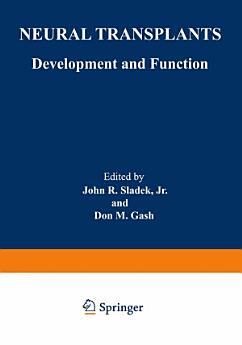Neural Transplants: Development and Function
John R. Sladek
nov 2013 · Springer Science & Business Media
eBook
454
Páginas
reportLas valoraciones y las reseñas no se verifican. Más información
Información sobre este eBook
The story of mammalian neural transplantation really begins eighty-one years ago. In Chicago in December of 1903, a 34-year-old physician, Elizabeth Hopkins Dunn, working as a research assistant in neurology, initiated a series of experiments to examine the ability of neonatal rat cerebral tissue to survive transplantation into the brain of matched littermates. Out of 46 attempts, four clearly successful grafts were identified. The publication of Dunn's results in 1917, the first credible report to demonstrate the feasibility of mammalian CNS transplants, generated little interest. In fact, the next significant experiment in this field did not appear until 1930. The field continued to grow slowly and quietly as investigators gradually realized the value of neural trans plantation to study problems of development and plasticity in the mammalian nervous system. With the discovery in 1979 that grafted neurons were capable of appropriate and functional interactions with the host brain, interest in neural transplantation esca lated sharply. The extraordinary opportunities created by using functional neural trans plants in investigating basic issues in neurobiology, as well as the clinical implications, excited both scientists and the public. The popularity of neural transplantation has been growing rapidly in the past five years and shows no signs of abating. The present volume was designed to meet two needs created by the rapid growth of this subdiscipline of neurobiology. The first was to provide a thorough review of the experimental foundations of neural transplantation.
Valorar este eBook
Danos tu opinión.
Información sobre cómo leer
Smartphones y tablets
Instala la aplicación Google Play Libros para Android y iPad/iPhone. Se sincroniza automáticamente con tu cuenta y te permite leer contenido online o sin conexión estés donde estés.
Ordenadores portátiles y de escritorio
Puedes usar el navegador web del ordenador para escuchar audiolibros que hayas comprado en Google Play.
eReaders y otros dispositivos
Para leer en dispositivos de tinta electrónica, como los lectores de libros electrónicos de Kobo, es necesario descargar un archivo y transferirlo al dispositivo. Sigue las instrucciones detalladas del Centro de Ayuda para transferir archivos a lectores de libros electrónicos compatibles.




